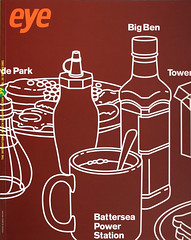Spring 2001
Letters from a partial history
Rudolf Koch, Letterer, Type Designer, Teacher
By Gerald Cinamon<br>The British Library, £35
Rudolf Koch was a man whose love of letterforms shaped a career that was to span a huge range of disciplines. As a letterer, typeface designer and teacher, his reputation spread far beyond his native Germany. Yet despite such recognition, the most extensive accounts of Koch’s achievements have been in the German language. As the first account of his life in English, this book is welcome.
We are presented with a detailed year-by-year account of Koch’s activities. Extracts from his writings illuminate the work (including many previously unpublished illustrations) through a more intimate knowledge of the man, along with observations by contemporaries. Cinamon’s reflections on the work are animated and give the reader some breathing space from the dense factual narrative. In addition to an extensive bibliography, Cinamon includes six appendices, including a list of typefaces and full directions for those wanting to make a pilgrimage to Koch’s grave.
The book’s design is disappointing: poor half-tones and the absence of colour often mean that work described as “breath-taking” and “imposing” appears dark and lifeless. The loss of impact is compounded by an overcrowded layout. More seriously, little consideration is afforded to the cultural and political climate in which Koch operated. The insubstantial nature of the contextual information Cinamon collates is not at first apparent. Yet the extensive lists of others working or exhibiting alongside Koch are meaningless without discussion of their ideas in relation to him. In his foreword, Hermann Zapf provides a starting point for an overview of early twentieth-century Germany that is never fully developed.
Koch’s work was deeply personal: perhaps Cinamon did not want to expand further on a world seemingly so removed from Koch’s own. Yet in the final stages of his life (Koch died in 1934) the outside world came crashing in upon his sheltered workshop environment. His work was threatened and his closest professional relationships were challenged as the reality of his own nationalist beliefs became manifest in the wider political atmosphere of the time.
Here the narrative seems to be at the point of opening out into a discussion of the complexities driving Koch but, frustratingly, it retreats into factual detail. Opportunities to draw together the narrative threads and to balance an otherwise reverential commentary are missed. A broader outlook on Koch’s practice could have bridged his ideas to those informing more recent practice. This is the greatest pity: that someone so dynamic and with as much to say to a contemporary audience as Koch has been relegated to a historical snapshot.
First published in Eye no. 39 vol. 10, 2001
Eye is the world’s most beautiful and collectable graphic design journal, published quarterly for professional designers, students and anyone interested in critical, informed writing about graphic design and visual culture. It is available from all good design bookshops and online at the Eye shop, where you can buy subscriptions and single issues.

